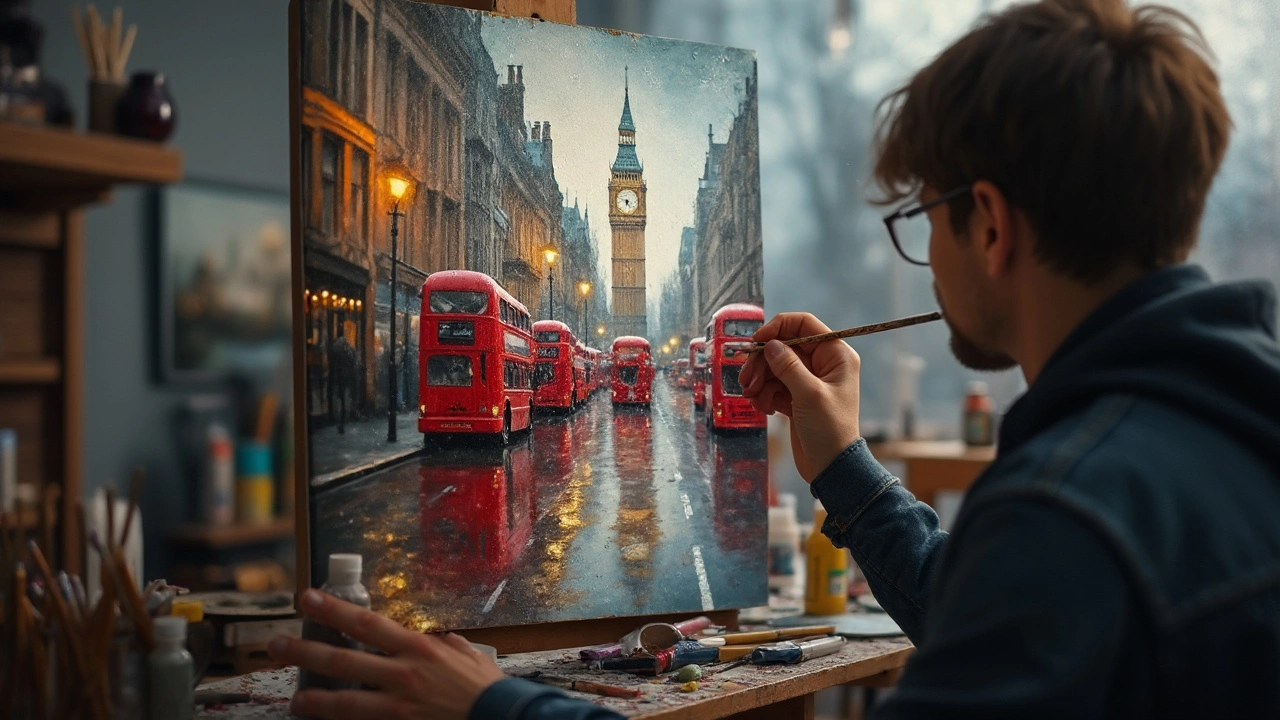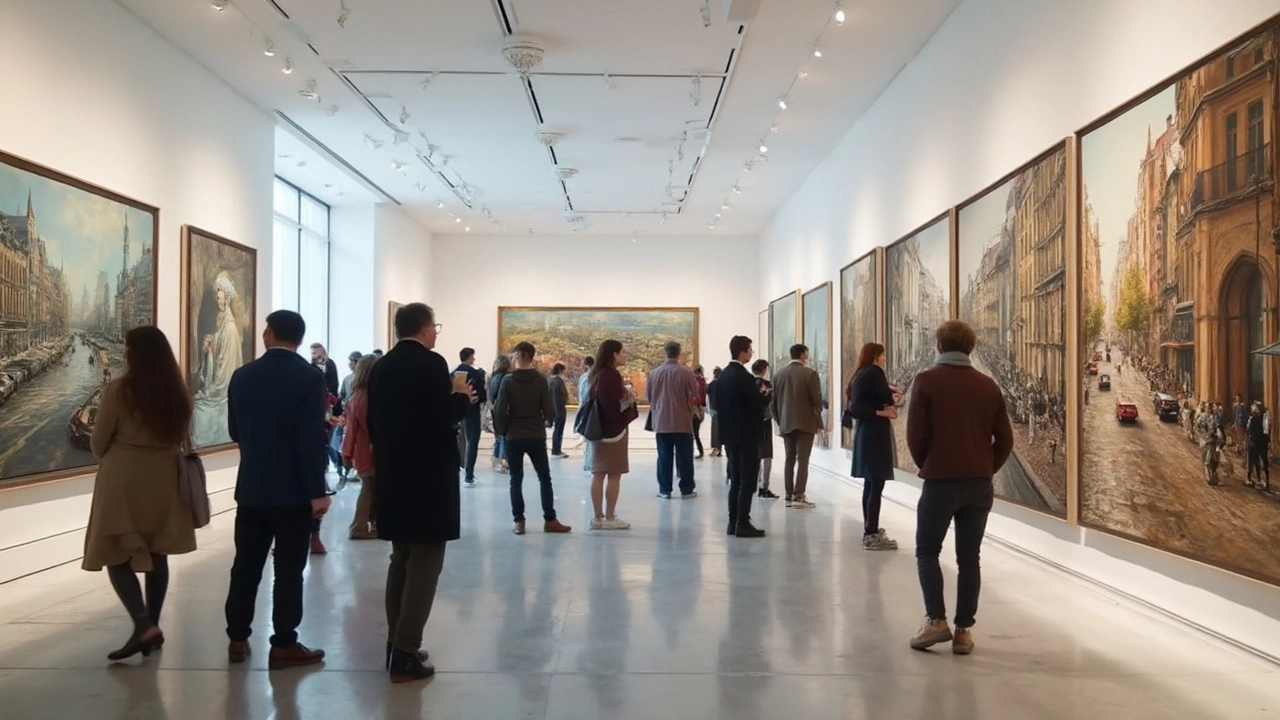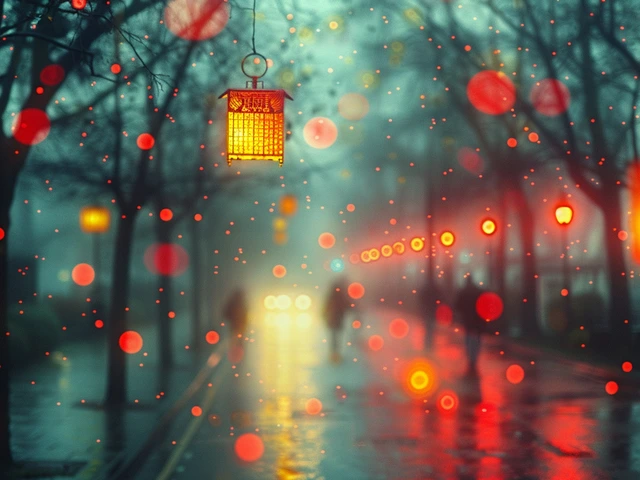Imagine stopping in front of a painting and having to lean in, squint, even argue with your mate about whether it's a photo or brushed canvas. That’s the twist photorealistic art pulls—tricking your eyes and your brain at every glance. While AI and perfect phone cams have made us cynics, these artists still mesmerize by using nothing but paint, pencils, and persistence. Some spend months hunched over a single piece. There’s no Photoshop, no filters—just sweat, craftsman’s grit, and wild talent. But photorealism isn’t just about copy-pasting objects. It's about breathing life into stillness, making everyday scenes quietly epic. Brisbane has a quiet love for these magic-makers, and if you ever visit the Queensland Art Gallery, you might spot a couple of these wizards hanging on the walls. Let’s unpack who’s making jaws drop in this space—and why their work matters now more than ever.
What Sets Photorealism Apart: The Rise of an Eye-Tricking Movement
Photorealism goes way beyond just drawing what you see. It's an intense, deliberate practice that emerged as a bold response to abstract and conceptual art in the late 1960s and early 1970s. Artists like Chuck Close and Richard Estes wanted to capture ordinary moments with such mind-blowing detail that people would do double-takes. Their aim? Not just to represent reality, but to challenge how we perceive reality itself. This wasn’t mindless copying; the best in photorealism push viewers to question what’s real. They often start with a camera, shooting their own reference photos, then painstakingly translate these images to canvas or paper—every shadow, every reflection, every quirk in the light gets mapped by hand.
As the years rolled on, photorealism picked up steam. While critics used to sneer that it was “soulless imitation,” the world started to see that imitating a lens could also reveal things a camera misses—the subtle warmth in skin, the cold edge in chrome, the washed-out nature of cityscape memories. These works require days, weeks, sometimes months of layer-by-layer work, with artists using magnifying glasses, tiny brushes, and an obsession for accuracy. If you’re keen to spot a true photorealist’s gem, look for those perfectly crisp lines, gleaming highlights on metallic surfaces, and portraits so alive you’d swear they're breathing.
In Brisbane and other corners of Australia, photorealism has inspired a new batch of creatives who blend technical mastery with a bit of modern cheek. The movement now branches off into hyperrealism—art that feels realer than real, bursting with emotion, sweat beads, the shimmer in wet eyes. Sometimes folks argue about where photorealism ends and hyperrealism begins—honestly, sometimes even the artists can’t agree. But if you’re out there scrolling Instagram or hunting for art to hang in your flat, knowing the difference pays off. Hyperreal work cranks up the drama, often adding narrative depth, while classic photorealism sits back, cool and steady, letting the subject speak for itself.
And why does this movement still pull curious crowds, from Brooklyn to Brisbane? There’s a shock in realizing that a human hand—not a camera—caught the glint of a highway in twilight, or the silky floss of hair against a collar. That push-pull between technique and feeling, between illusion and proof, gives photorealism its cult status among art lovers. Next time you spot a piece like this in a quiet gallery, do yourself a favor: get close, step back, squint, move side to side—see how the painting keeps changing. That’s the magic engineered by these artists.
10 Best Photorealism Artists You Should Know
Here’s the headline act—the artists who pull off moments so real, you’ll wonder if you’re staring straight into another dimension. Each one has their quirks, obsessions, and techniques that make them legends of the genre. They come from different countries, backgrounds, and sometimes weird day jobs before turning full-time artist. Let’s walk through the best known names and why they matter today:
- Chuck Close: The godfather of the genre. His huge, gridded-up portraits broke the rules. Chuck’s early career blew up when he painted massive faces with every pore, wrinkle, and vein lovingly rendered. Even after a spinal artery collapse left him paralyzed, Chuck developed new ways to paint using custom tools, showing nothing could slow him down. His works hang in MoMA and the National Gallery of Art.
- Richard Estes: The king of urban scenes. If you love sparkling city streets, glass reflections, and New York at dawn, Estes’ paintings are for you. He’s the go-to for chrome, neon, and the grit of ‘70s America, all rendered in layers so real they practically hum.
- Audrey Flack: Fierce, elegant, and ridiculously detailed. Her vanitas still lifes—think fruit, cosmetics, and melted candles—pop with symbolic meaning. Flack uses objects women use daily, making her work powerful and personal. She was one of the first to bring photorealism out of the boys’ club.
- Robert Bechtle: Centered on suburbia, Bechtle painted family cars and sunny streets across California. His paintings know exactly how to blend nostalgia with razor-sharp realism. If you’ve ever had a quiet arvo staring at the parked cars outside your house, you’ve felt the heart of his work.
- Ralph Goings: Obsessed with diners, pick-up trucks, and fast food counters, Goings loved painting blue-collar America. His ketchup bottles and chrome napkin holders became icons of the everyday—a love letter to the ordinary that feels timeless.
- Ben Johnson: This Brit is the architect of cityscapes. Whether it’s the Sydney Opera House or the bustle of the London skyline, Johnson’s works are built brushstroke by brushstroke with scary levels of precision. His studio process reportedly involves laser measurements and custom scaffolds just to keep things sharp.
- Roberto Bernardi: If you’ve ever wondered how water droplets on fruit or sweets in glass jars could look so tasty on canvas, Bernardi is your guy. An Italian virtuoso, he paints hyper-saturated, brightly lit still lifes that make you want to reach out and nick a lollipop.
- Raphaella Spence: Mixing drone photography with wild technical chops, Spence creates vast cityscapes that sparkle with energy. She even paints cities at night so well you can practically hear the distant taxis. Her digital-to-canvas process is a modern twist on classic photorealism.
- Jason de Graaf: Canadian artist de Graaf dives deep into reflections and glass surfaces. His play with composition—marbles, water, and mirrored metal—shows how photorealism can turn tiny, overlooked things into blockbusters.
- Taner Ceylan: Ceylan brings Turkish culture into focus, mixing classical influences with raw, naked realism. His works bristle with tension, emotion, and painstaking clarity. If you like your photorealism with a dose of bold storytelling, check him out.
This list isn’t exhaustive, but start here and you’ll have plenty to talk about at your next gallery trip—or when bragging in the group chat. Each artist’s Instagram is a rabbit hole for hours of scrolling. One neat tip: look up museum schedules or check out traveling photorealism exhibitions. Sometimes a city near Brisbane plays host, and you really shouldn’t miss seeing these in person if you get the chance.

Techniques and Insider Secrets Behind Photorealism’s Best Works
Ever stood in front of a photorealist painting and sat there scratching your head, wondering, “How on earth do they get it that crisp?” The secret isn’t just fancy brushes. Most photorealists start with a camera—sometimes shooting hundreds of photos to find that one frame. Then, they grid or project the image onto canvas to map out every shadow, every sliver of light. Some use airbrushes for silky gradients, others go old-school with hundreds of tiny brush strokes. If you peek behind the scenes, you sometimes find wild gear: magnifying glasses clamped to desks, special rulers, and full-light studios to chase the perfect highlight.
Color is a big deal. Rather than mixing on the fly, top artists mix swatches beforehand, matching tones from their reference photo. If they get it wrong, you can bet they’ll repaint a section until it matches a real-world object. The layering process is slow. First a base, then midtones, highlights, and glazes. Every layer adds depth—get close, and you’ll spot endless, nearly-invisible transitions between colors. Some artists draw on clear acetate before transferring to canvas, avoiding messy lines or smudges. Others embrace “alla prima” (wet-on-wet), finishing a small section fully before moving on.
Table of classic photorealist tools and aids used by these top artists:
| Tool | Purpose | Artists Known For Using |
|---|---|---|
| Gridding | Mapping photo details onto canvas accurately | Chuck Close, Audrey Flack |
| Magnifying glass | Seeing tiny details | Roberto Bernardi |
| Airbrush | Blending smooth gradients | Ralph Goings |
| Projection | Projecting photos for tracing | Richard Estes |
| Layered glazing | Building up colors for realism | Ben Johnson |
If you want to try photorealism at home, start small. Take a good, clear photo of something in sharp light—maybe your favourite coffee mug or your pet’s nose in the morning sun. Print it out, grid it, and then sketch it carefully. Paint or pencil in slow, deliberate layers, matching colors to the real deal. The trick? Patience. Most newbies go too fast. The masters might spend days just on one reflective highlight or a patch of denim.
If you find yourself addicted, there’s no shame. Even some of the greats, like Audrey Flack, talked about painting through dinner, lost in the detail. My spouse, Isla, laughs that I once got so into copying a photo of our old rusty Holden that I missed a whole weekend. Lose yourself in the task—it’s a proper kind of meditation.
Where to See Photorealistic Art Today
You don’t have to travel far and wide to catch photorealism in person, but seeing these works up close beats scrolling online. Most major art cities, including Sydney and Melbourne, host rotating exhibits with photorealism’s big names. Try the Queensland Art Gallery in Brisbane—they’ve hosted modern realism shows a few times and always pull a good crowd. Overseas, New York’s Whitney, London’s National Gallery, and several private collections have work from artists on this list.
Photorealism also thrives online. Instagram, Behance, and personal artist sites give you endless new pieces—to the point where spotting real from fake gets tricky. While AI art has gotten good at mimicking photorealism, nothing compares to seeing paint textures, brush hairs, and little oddities in person. Museums sometimes bring out loan exhibitions packed with rare works, so it pays to follow them and watch for updates.
Looking for artists closer to home? Australia’s photorealist scene is way underrated. You’ll find a mix of older painters who cut their teeth on ‘70s techniques and younger digital-to-canvas prodigies. Galleries in Fortitude Valley, for example, often feature up-and-comers who mix local city views or outback landscapes with razor-precise technique. Even monthly art walks sometimes hide a gem among abstract or pop art.
On the collecting side, if you’re after an original or print, connect directly with artists or trusted galleries. Many artists now offer video tours—watch how they layer, sketch, and finish each piece. If you dream of commissioning a portrait or city scene, most pros are eager for a chat on custom work. Just expect a waitlist and more than a little sticker shock; a single painting could take months and command five-figure prices.
When you get up close to a photorealist masterpiece, you’re not just seeing a snapshot. You’re seeing thousands of choices, patience, and skill coming together to create the best art trick your eyes will ever play.




